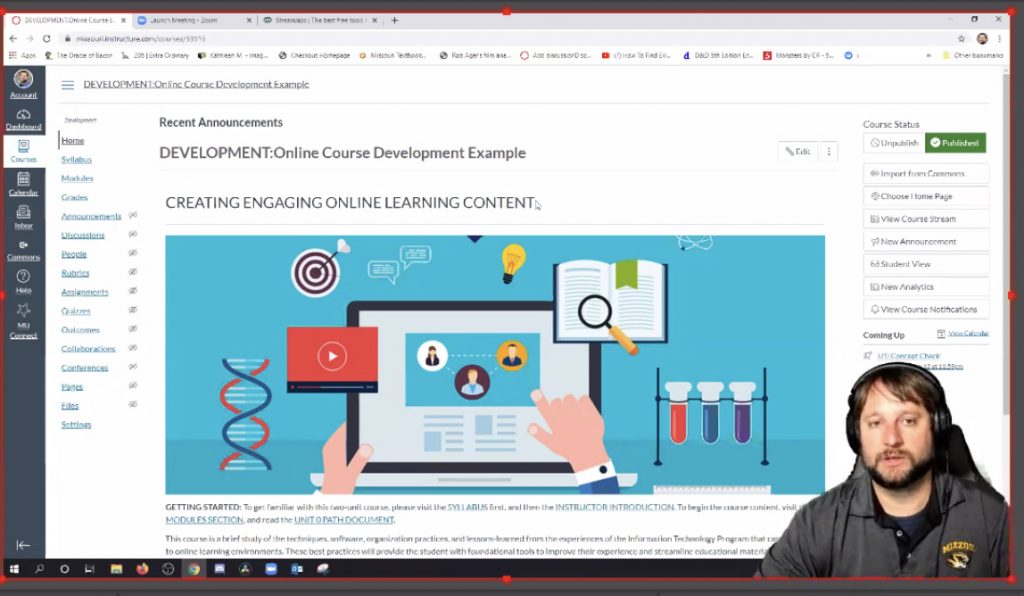June 16, 2020

Gillian Maurer demonstrates advanced online learning options to fellow faculty members during a seminar held last month. Now, Maurer is providing a way for faculty to incorporate these techniques.
Mizzou Engineering students could see advanced online learning experiences this coming year. A new lab will equip faculty from across the College with professional-level studio equipment.
Gillian Maurer is designing the lab. He is director of undergraduate studies for the Information Technology program.
“The idea is to provide faculty with an appropriate facility for developing and deploying the highest quality educational materials we can for both synchronous and asynchronous classes,” he said.
Mizzou administrators expect in-seat classes to resume this fall. Still, some courses will be offered online to support social distancing.
The new lab will allow faculty members to conduct live classes and pre-record lectures for online classes. Instructors will also be able to engage students through demonstrations.
The lab will have several cameras to provide different views and angles. An overhead camera will allow faculty members to show equipment. Instructors will be able to display charts, images or graphics behind them. They will have access to an interactive tablet where they can write out notes and equations. And they’ll have the ability to switch camera views at any time.
The lab will also double as a teaching facility for students. Trained students will operate the lab and assist faculty members using it.
“For students, it will provide a project management setting,” Maurer said. “They will get on-site, on-the-job training. This is especially important for IT students, and also for other students interested in the field.”
Exploring the Future of Online Learning
Eventually, Maurer plans to use the lab to launch new types of online learning experiences.
“It will become a lab where we can investigate high-impact, technology-based educational systems,” he said. “And these systems will redefine online learning and education.”
Maurer envisions using gaming technology to create virtual classrooms. Students would use VR headsets to see and hear instructors in a virtual environment.
He also wants to take advantage of new motion tracking sensors, visual effects technology and the design software, Unreal Engine, which debuted on set of the popular Disney+ series The Mandalorian. The technology has limitless potential for engineering. Imagine a professor demonstrating a bridge collapsing by putting students on the scene. Or a student learning neural engineering by wandering through the circuits of the brain.
“This is media technology where graphic artists and 3D modelers will be able to work with us and create gaming environments where we demonstrate these engineering principles,” Maurer said. “We’re going to be investigating the potential of future educational technologies.”
Maurer realizes his vision is likely years away. But by taking advantage of some components this year, he hopes educators will see the potential.
“I am interested in integrating our best practices of active learning with emerging technologies wrapped inside engineering principles and subjects,” he said. “It’s going to require investment, something we don’t have in abundance right now. But the first thing I can do is improve lectures. Improving the student learning experience is paramount.”
Maurer teaches post-production and media technology as part of the IT curriculum.